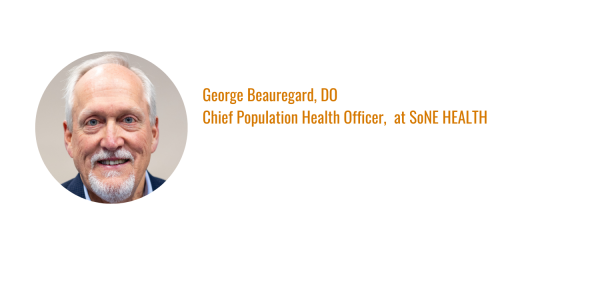By: George Beauregard, DO, Chief Population Health Officer
Entering the world of blogging at age 68 is a daunting task, even for someone possessing 40 years of medical practice and population health management expertise and experience.
As I contemplate the myriad of things I could write about. Like, given how medical knowledge has been expanding exponentially since 1950, when it doubled every 50 years, to 2020, where estimates have it doubling every 73 days. About 7,300 publications of clinical trial results appear in four major national and international medical databases annually.
It begs the question: How’s a practicing doctor supposed to keep up with developments in his or her specialty amidst this ever-rising flood of new information? How do physicians on the front lines of healthcare delivery sift through this sea of information to find the high-value nuggets that will improve the care they provide to patients?
The image I have of today’s frontline doctors—particularly primary care providers—is one in which they are staring at a video wall, each screen displaying the falling, trickling green codes of the Matrix. It’s a dizzying array of information, one that includes noise and signals, to navigate. Operationally, it’s made even more challenging by the complexities of how health care is paid for—the byzantine practices of employer-sponsored insurance and the commercial payer multiverse. At the risk of being too provocative, perhaps it is time for single payer healthcare.
Modern medicine has come a long way in terms of diagnosis and treatment, but there are still significant variations in the use and adoption of advances in everyday practice. As someone who has dedicated his life to improving individual and population health, I believe that medicine must accelerate its efforts to transition away from mostly being a repair shop and focus on getting upstream of the factors that contribute to declining health trajectories.
From lifestyle habits and genetics to invisible carcinogens and environmental factors like microplastics, there are countless variables that can impact an individual’s health. Not to overlook an issue that’s particularly important to me, the global phenomenon of the rising incidence of early-onset cancers.
The promise of gene editing (including in vivo) and multi-cancer early detection tests represents a significant advancement in the field of medicine. With in-vivo gene editing, the potential to correct genetic mutations at the cellular level opens new possibilities for treating genetic disorders and diseases. Furthermore, multi-cancer early detection tests have the potential to revolutionize cancer screening by detecting the presence of various cancer types at an early stage, improving treatment outcomes and survival rates. However, the peril lies in the ethical implications of gene editing, inclusion concerns about unintended consequences, and the potential for misuse. Additionally, false positives and the psychological burden of early cancer detection can pose challenges for individuals undergoing screening. Striking a balance between the promise and the peril of these technologies will be crucial in shaping the future of healthcare.
Not all physicians and patients have the luxury of living near top-tier academic medical centers, universities, and biotech companies.
I can’t help but wonder what the future of healthcare holds for my grandchildren. There’s optimism that artificial intelligence will overcome all its predecessors’ failures. Others see AI being offered up at the same altar to healthcare gods, only to suffer its sacrifice, too.
We’re all holding the Rubik’s cube that is healthcare.
As I embark on this blogging journey, I hope to explore these questions and more, and perhaps shed a little light where I can. While I readily admit that I’m not a medical luminary, my intellectual curiosity has never been higher. Age does that.
I look forward to sharing my thoughts and insights on many issues as I navigate the ever-evolving landscape of modern medicine—with amazement, optimism, and hope.
